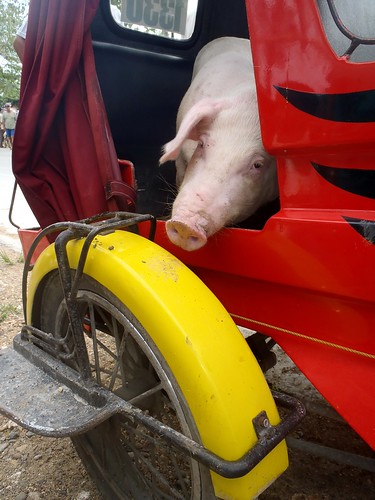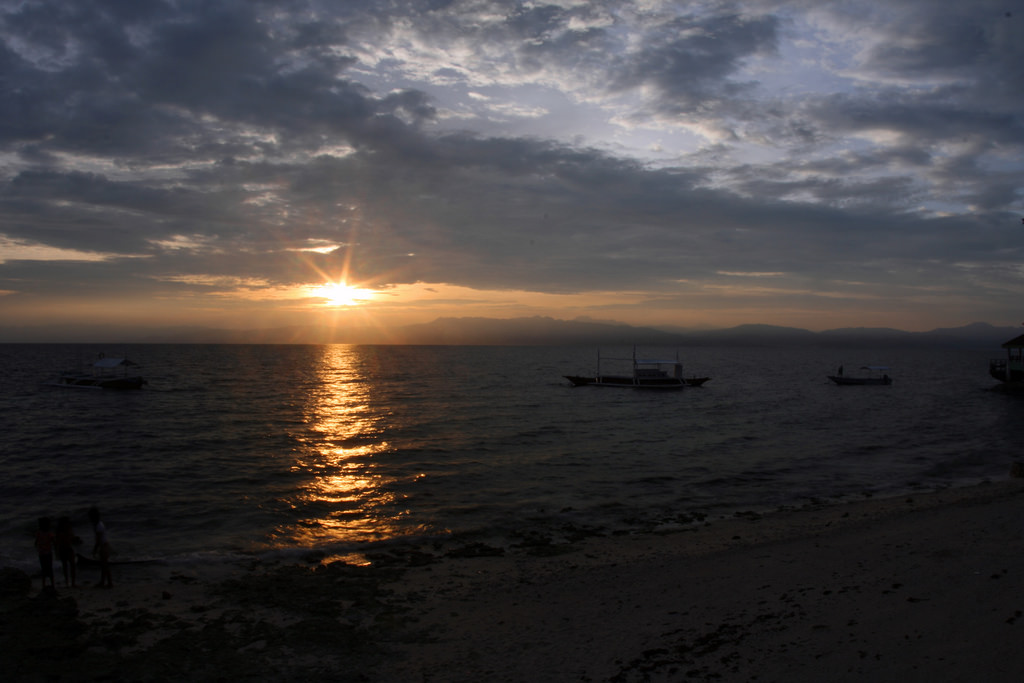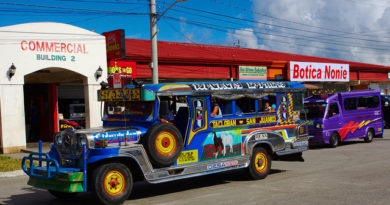How to Travel the Philippines
Recently, a few mates from overseas came to visit me here in the Phils, plan to do it, or headed to other dive spots in the country. I usually had a chat with them about their travel planning, and these are some tips I always end up giving them:
Take your time!
It pays off to not cram too much into your travel schedule. You want to spend the majority of your time on the beach, underwater or in bars holding a “San Miguel”, not in buses or on ferries. Due to the geography of an island nation, local transport can take a long time: On a typical trip you might have to switch from ferry to bus, back to ferry and then to a tricycle to reach your target. The ferries might not run when the waves are too high; the bus might be late. A trip with a path length of a few hundred kilometers which would be a few mindless hours of cruising along a highway on a continuous land mass in Europe or the US will take a whole day in the islands of the Philippines.
Also, it’s good to suck in the vibe of a place. One extra day on the beach looking at the mountains of the next island on the horizon calms the mind. You’ll meet interesting, or at least funny people, both tourists and locals. If you are planning to do some nature exploration, like looking for thresher sharks, realize that they might not show up very single day. A few extra days to give Mother Nature another chance to deliver the experience make your travels more relaxed and rewarding.
I recommend about a week in one spot, at least. Friends of mine who visited lately went to four destinations in 2 weeks, and had a very good time. But, they are very high energy people and they fortunately were lucky with all of their connections.
Don’t Drive
No, I don’t recommend “don’t drink & drive”. I say “don’t drive”, if you are used to Western orderly boring traffic. The major roads in the parts of the Philippines I am familiar with are in solid shape. But, a country experiencing rapid population growth also experiences rapid vehicle number growth. And those vehicles come in a variety of shapes and states:
Some rich people of course have nice new cars here as well, while others operate automobiles held together by duct tape, rust and repair ingenuity. You’ll see tricycles, motorbikes with a passenger compartment welded to them. There might be one passenger per tricycle, or six. Sometimes, a giant pig is the tricycle passenger. Oh, man, pigs grow to huge sizes. If you only see your pork dead & clear-wrapped in the supermarket, you don’t realize that! A tricycle with a pig is slow and hard to pass.

Motorbikes are generally the mode of transport of choice in the Philippines. Some are ridden by young guys with hip baseball caps and an extra load of mojo, others have whole families on them, with the little kids standing in-between the adults. Sometimes a big sack of rice is balanced by the passenger behind the driver. The fully loaded motorbikes have become such a classic Philippine photo subject that half of the travel guides to the country have a picture of them on the cover.
You’ll also encounter buses and those fast, giant, scary trucks transporting huge amounts of sugarcane. These race along the roads at night. I don’t know how long it would take them to come to a stop, and I don’t want to find out!
All of these vehicles go at radically different speeds, and not always on the right side of the road. Passing is accepted both on the left and the right. These are quantum physics road rules: there is a high probability, but no deterministic certainty that a road user will be traveling on the right side. At night, most folks have lights, but not all. A special trick some dudes on motorcycles use is to have a white back light: it makes you believe there is someone going backwards very fast.
The side of the road is no dead barren space like in most of Euroland and North America. People, water buffaloes, stray dogs and goats frolic right on the side of the pavement. When they cross the road, they sometimes look. In fact, the people, water buffaloes and goats are quite proficient at looking. The dogs don’t have an understanding of the inherent dangers of large, fast moving car- or bike-shaped metal objects yet.
This is all great fun to watch if you are not the one driving. It’s creative chaos at its best. But to keep your nerves (and maybe, limbs) intact use the public bus system (yellow Ceres buses), tricycles, “hubble hubble” motorbike taxis or regular taxis, or rent a car with a driver for a bit more $$.
Money
ATM machines which take foreign cards are available in major cities and mid-sized towns, not in more remote locations or small islands (Malapascua). Moalboal, Cebu, where I am based, is a provincial town and has two. These will give you 10000 Peso in one transaction (~200 Euro), with a 200 Peso fee. These ATM machines usually work. You might have to wait a day or two, especially when it’s very rough weather and the communication lines break down. Bring enough cash to not depend on the ATM machines for your day to day money needs. There are money changers accepting Euro, US$ and Aussie$ in many places. The little changer booths usually have better rates than the banks. Credit cards are accepted in malls, high-end restaurants in cities, and many dive shops. They are almost never accepted in beach-side eateries and the likes. Often small restaurants, fruit stands, taxis, etc will not have change for large (1000 & 500 Peso) bills. It can make your life easier to have enough coins and small bills with you.
Please also check out my dive map of the Philippines, an interactive tool to chose the right dive spot for you.

